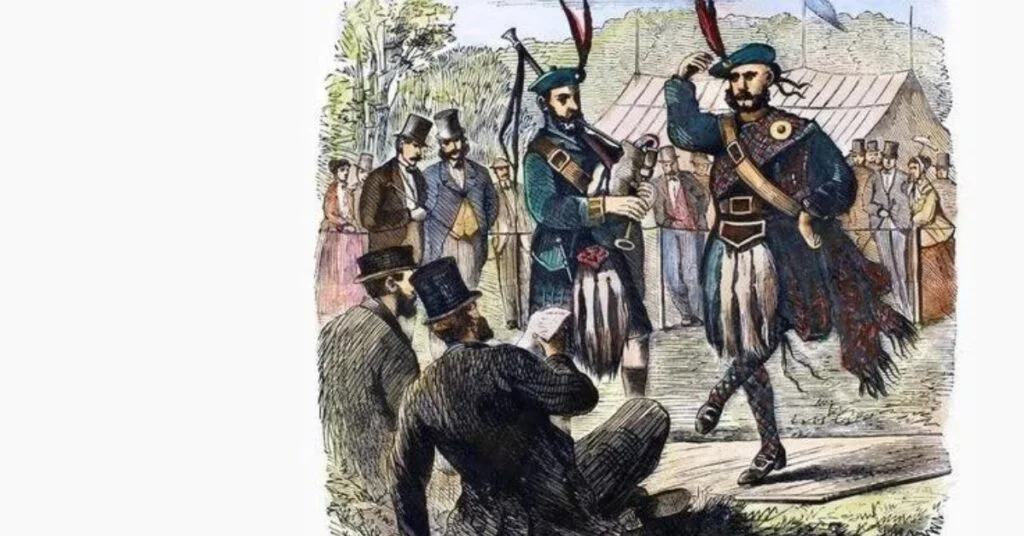The Scottish kilt stands as a symbol of pride, heritage, and style, deeply woven into the fabric of Scottish culture. Its origins date back centuries, evolving from a practical garment worn by Highlanders into a global fashion statement. In this comprehensive exploration, we journey through time to uncover the fascinating history of the Scottish kilt, tracing its evolution from humble beginnings to its esteemed status in the fashion world today.
Define the Scottish Kilt
The Scottish kilt is a traditional garment that originated in the Highlands of Scotland. It is characterized by its pleated design, tartan pattern, and knee-length hemline. Historically worn by Scottish men as a practical and functional garment, the kilt has transcended its utilitarian roots to become a symbol of Scottish identity and cultural pride.
Relevance and Importance
Beyond its aesthetic appeal, the Scottish kilt holds deep cultural significance for the Scottish people. It serves as a tangible link to Scotland’s rich history and heritage, representing the resilience and spirit of its people. Additionally, the kilt plays a vital role in various ceremonial occasions, including weddings, graduations, and Highland gatherings, further cementing its importance in Scottish culture.
Fashion History
Ancient Origins
The origins of the Scottish kilt can be traced back to the ancient Celts, who inhabited the Scottish Highlands around 300 BCE. These early inhabitants wore a garment known as the “féileadh mòr,” a precursor to the modern kilt, which consisted of a large piece of cloth draped around the body and belted at the waist.
Evolution of the Modern Kilt
The modern Scottish kilt as we know it began to take shape in the 16th century. During this time, the “féileadh mòr” evolved into the tailored garment we recognize today, consisting of pleats at the back and a flat front apron. Tartan patterns, which are synonymous with Scottish identity, also became closely associated with the kilt during this period.
Key Designers and Brands
Traditional Tartan Mills
Meta Description: Explore the legacy of traditional tartan mills and their role in preserving the authenticity of Scottish kilts. Learn about renowned designers and brands that have shaped the modern landscape of Scottish fashion.
Tartan Mills
Traditional tartan mills play a pivotal role in the production of authentic Scottish kilts. These mills specialize in weaving tartan fabrics, meticulously crafting each design to honor Scotland’s rich heritage. Some of the most renowned tartan mills include Lochcarron of Scotland, Harris Tweed Authority, and Strathmore Woollen Company.
Renowned Designers
In addition to traditional mills, several designers have played a significant role in popularizing the Scottish kilt on the global stage. Designers such as Alexander McQueen, Vivienne Westwood, and Burberry have incorporated tartan motifs into their collections, reimagining the kilt as a fashion-forward garment with timeless appeal.
Fashion Shows and Events
Highland Games
Meta Description: Immerse yourself in the vibrant atmosphere of Scotland’s Highland Games, where the Scottish kilt takes center stage. Discover the cultural significance of these events and their influence on contemporary fashion trends.
Cultural Spectacle
The Highland Games are a series of traditional Scottish events that celebrate Scottish culture and heritage. These gatherings feature a range of athletic competitions, music performances, and cultural displays, providing a platform for the Scottish kilt to shine. Visitors from around the world flock to these events to witness the spectacle of kilts in motion and immerse themselves in Scottish tradition.
Fashion Forward
In recent years, the Highland Games have also become a showcase for contemporary fashion designers to reinterpret the Scottish kilt. From avant-garde runway presentations to street-style-inspired ensembles, the kilt continues to captivate audiences with its versatility and timeless allure.
Contemporary Silhouettes
In recent years, designers have reimagined the traditional kilt silhouette, experimenting with asymmetrical hemlines, bold color combinations, and unexpected fabrications. These modern interpretations breathe new life into the classic garment, appealing to a diverse range of fashion-forward consumers.
Sustainable Practices
As sustainability becomes increasingly important in the fashion industry, many designers are incorporating eco-friendly practices into their kilt production processes. From sourcing organic materials to implementing ethical manufacturing practices, these initiatives ensure that the Scottish kilt remains not only stylish but also socially responsible.
Sustainability in Fashion
Organic Wool
Organic wool is a sustainable alternative to conventional wool, produced without the use of synthetic pesticides or fertilizers. Many Scottish kilt makers prioritize the use of organic wool sourced from local farms, supporting sustainable agriculture practices while reducing the environmental footprint of their garments.
Recycled Fabrics
In addition to organic materials, recycled fabrics are gaining popularity among eco-conscious fashion brands. By repurposing pre-existing textiles, designers can minimize waste and lower their carbon emissions, contributing to a more circular economy. Recycled wool, cotton, and polyester blends are commonly used in the production of sustainable Scottish kilts.
Conclusion
In conclusion, the Scottish kilt remains an enduring symbol of Scottish culture and identity, transcending generations and continents. From its ancient origins in the Scottish Highlands to its contemporary interpretations on the global runway, the kilt continues to captivate and inspire with its timeless elegance and cultural significance. As we look to the future, the Scottish kilt will undoubtedly remain a cherished icon of fashion and heritage for years to come.


